[Updated 1 January 2024] Archery is a sport that has been around for centuries. From Native American tribes to the Olympics, archers have always had a place on battlefields and competitions. It is a sport that requires the use of many different types of equipment. From bows to draw weights, there are a lot of pieces you need in order to shoot arrows and be accurate. In this blog post, we will discuss what archery equipment is necessary for shooting accurately and which items should be avoided at all costs.
Bow
Table of Contents
There are four main types of bows– recurve, compound, and longbow, crossbow. The first bow to use is the recurve, which is easy to learn and comfortable for most beginners. Recurves are easier than other types of bows because they have a curved shape that tips away from the archer, allowing all angles of use on both right-handed and left-handed people. In addition, some recurves come with an arrow rest that accommodates different sizes of arrows, while others do not need one at all.
Check out the Best Recurve Bows for Beginners.
Arrows
When selecting an arrow, it is essential to remember that the length of your arrows must be in accordance with your individual physical capabilities. For example, you should never use a short arrow because this can result in damage to both you and your bow.
An arrow is made up of four basic components.
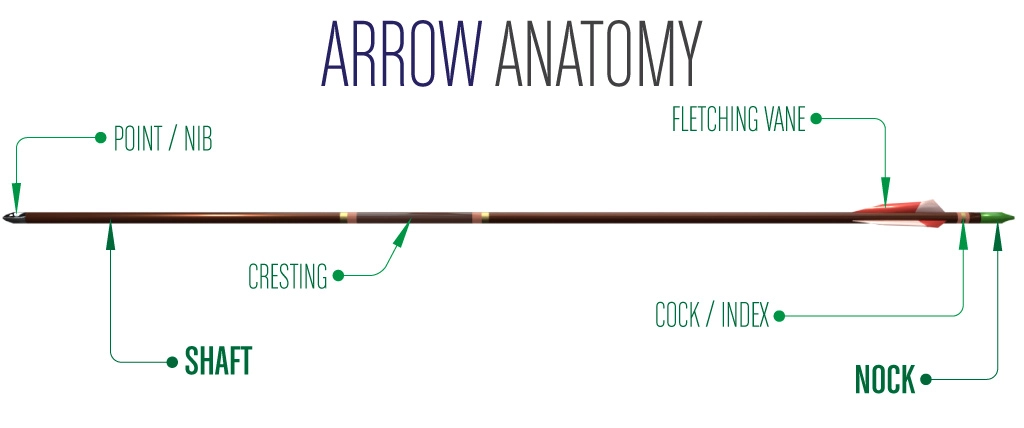
- Shaft: The arrow shaft is the central part of an arrow and can be made of either wood or aluminum, or carbon.
- Nock: One of the most essential components of archery is the arrow nock. The arrow nock transfers energy from a bow to an arrow, making it one of the most crucial parts of any archery setup.
- Fletchings: Attached to the back of the arrow shaft, fletchings are made with feathers or plastic attachments designed to provide stability during flight.
- Pile: The point of the arrow is called a pile. It’s usually made from a heavier metal than the shaft to keep it flying straight.
Archery Target
An archery target is a large, usually round piece of material that is used for practicing the art of shooting with an arrow. Archery targets are often set up in outdoor settings such as yards or parks, but they can also be found inside. They come in many different styles and materials, but most have concentric rings marked on them to measure how far away you are from the bull’s-eye.
The archery target consists of three parts:
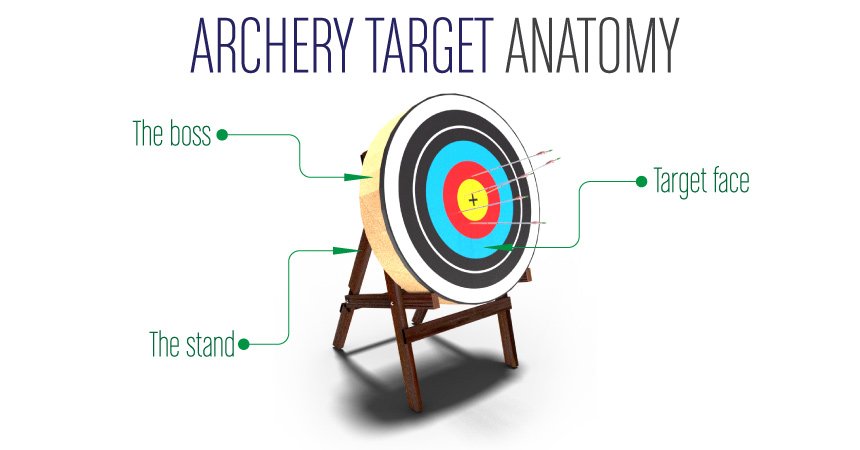
- The target face is what defines the aiming point. It may be made from paper, wood, or synthetic materials, which are grouped together and reinforced to form a bull’s eye (center of the circle).
- The boss is used to stop any arrows fired into it. For range purposes, they are often made from rubber or polystyrene foam, while at competitions, they also include some type of straw as packing material to minimize bounce-back.
- The stand holds all these pieces together and usually consists of two vertical posts that provide a rectangular shape onto which the target face attaches with clips or staples.
Bracer/Arm Guard
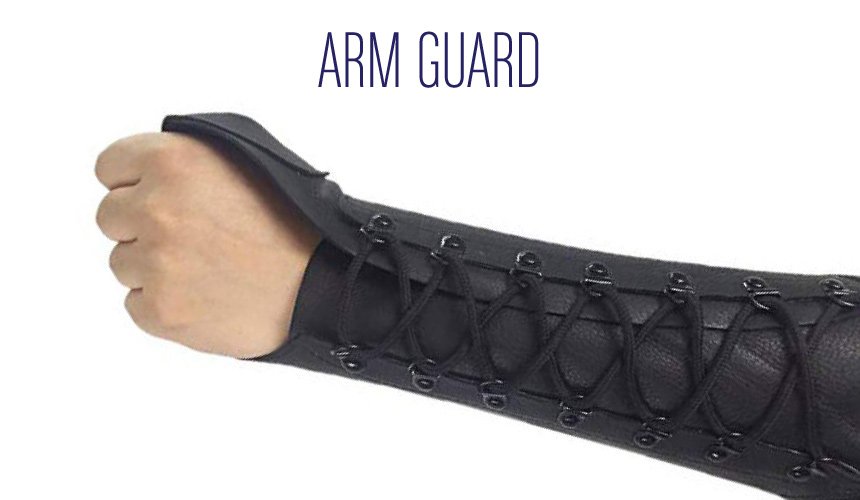 A bracer is a piece of protective gear and can be made from leather or elastic. It fits the inside of your arm, holding the bow between the elbow joint and wrist. The widest end fits closest to your elbow.
A bracer is a piece of protective gear and can be made from leather or elastic. It fits the inside of your arm, holding the bow between the elbow joint and wrist. The widest end fits closest to your elbow.
Check out the Best Archery Arm Guard or Bracer for Shooting.
Quiver
 An arrow quiver is a device designed for storing arrows. There are two broad categories: waist quivers and ground or stand quivers. The side quiver wear on a belt. However, the ground quiver can be placed next to the archer or in the ground so that arrows are close by when not used.
An arrow quiver is a device designed for storing arrows. There are two broad categories: waist quivers and ground or stand quivers. The side quiver wear on a belt. However, the ground quiver can be placed next to the archer or in the ground so that arrows are close by when not used.
Check out the 10 Best Quivers for Arrows.
Bow Stand
 The Stand for Bows is a free-standing, vertical stand of which your bow and its components are off the ground. The Bow Stand offers an excellent storage platform for your equipment when not in use or on display.
The Stand for Bows is a free-standing, vertical stand of which your bow and its components are off the ground. The Bow Stand offers an excellent storage platform for your equipment when not in use or on display.
Check out the Best Bow Stands.
Finger Tab
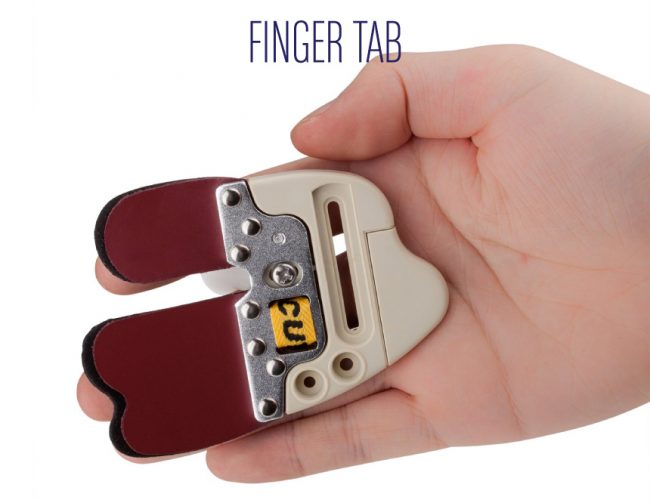 A finger tab protects the archer’s fingers while they draw the string. These tabs usually secures over your fingers, and some models can be adjusted to accommodate different sizes of hands.
A finger tab protects the archer’s fingers while they draw the string. These tabs usually secures over your fingers, and some models can be adjusted to accommodate different sizes of hands.
Check out the Best Archery Finger Tabs protect guard for your finger.
Bow Stringer
 An archery stringer can be used to string and unstring a bow. However, it is essential to note that you should always do so under the supervision of an experienced archer.
An archery stringer can be used to string and unstring a bow. However, it is essential to note that you should always do so under the supervision of an experienced archer.
Arrow Rest
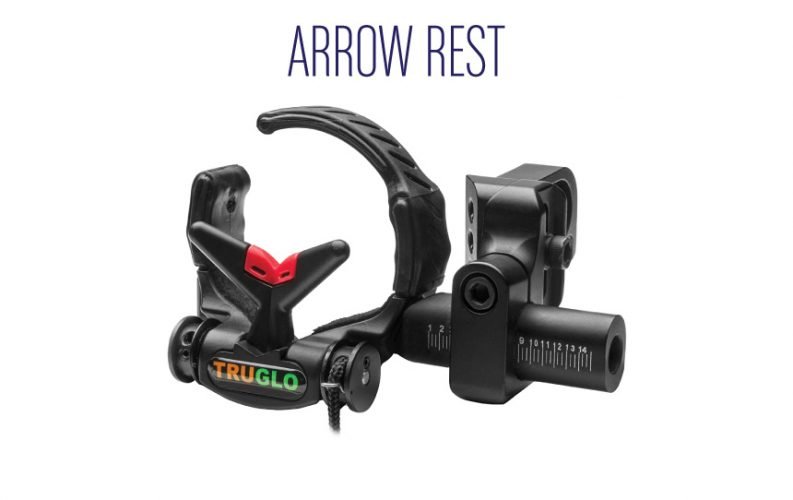 An arrow rest is a small, flexible device that attaches to the top of the bow’s handle on either side. It supports an arrow while being shot and stays out of the way as it’s fired.
An arrow rest is a small, flexible device that attaches to the top of the bow’s handle on either side. It supports an arrow while being shot and stays out of the way as it’s fired.
Frequently Asked Questions(FAQs)
What is the arrow holder called?
It is called a quiver that holds your archery arrows. Depending on the shooting and the archer’s personal choice, it can be carried on an archer’s or the ground.
Do you need a archery license to own a bow?
A bow and arrow do not require a license to own or possess. However, local laws and rules may have an impact on your usage. To hunt with an arrow, you must have a hunting license and follow hunting regulations.
Can you learn archery by yourself?
Yes, archery can be self-taught if you study everything you can, seek advice from expert archers, put in a lot of practice, constantly strive to perfect your form, and keep safety first at all times.
What is the essential archery equipment needed for beginners?
For beginners, the essential equipment includes a bow, arrows, a quiver, and an armed guard. Some may also find a finger tab or release helpful aid. It is essential to get correctly fitted equipment for your size and strength.
What types of bows are available for archery?
Three main types of bows are used in archery: recurve, compound, and longbow. Recurve bows are the most common for beginners, as they are easy to use and versatile.
What types of arrows should I use for archery?
The type of arrow you should use depends on your bow’s draw weight and strength. Generally, beginners should use arrows made of lightweight materials such as aluminum or carbon fiber.
What is a quiver, and why is it important?
A quiver is a device used to hold arrows. It is essential to have a quiver so that you can easily access your arrows while shooting.
What is an armed guard, and why is it important?
An armguard is a device worn on the forearm to protect it from being hit by the bowstring. It is essential to wear an armguard to prevent painful injuries and bruises.
What is a finger tab, and how is it used?
With a finger tab, you can protect your digits from the bowstring’s powerful pull so that archery is comfortable and safe. It is used to prevent painful injuries and to help you maintain a consistent grip on the bowstring.
What is a release aid, and how is it used?
A release aid is a device that helps you release the bowstring more consistently and accurately. It is commonly used by compound bow users but can also be used by recurve bow users.
How do I determine my draw length?
Your draw length is the distance between your bow hand and your anchor point (usually the corner of your mouth). Several methods to determine your draw length include using a measuring tape or having a professional archery technician measure you.
How do I determine my bow’s draw weight?
Your bow’s draw weight is the force required to pull the bowstring back to full draw. This can be determined by looking at the bow’s specifications or using a scale.
How do I care for my archery equipment?
It is essential to keep your equipment clean and dry. Store your bow and arrows in a cool, dry place, and regularly inspect them for any signs of wear or damage. Follow manufacturer instructions for maintenance and repair.
Conclusion
In conclusion, archery is a fascinating sport requiring skill, focus, and proper equipment. The first step is to choose the right equipment for success in this sport and understand the different types of bows, arrows, and accessories available. Archers can select equipment that suits their needs and preferences by considering factors such as draw weight, arrow length, and bow material. With the right equipment and plenty of practice, anyone can enjoy the challenge and excitement of archery.
Check out the Best Arrow Rest for Archers.



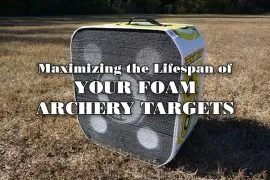

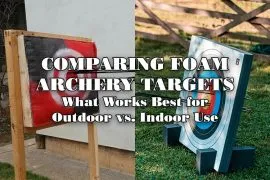
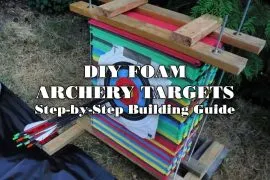
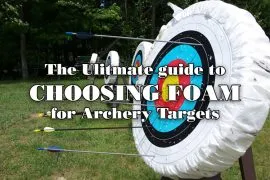
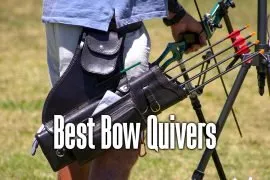
23 Comments
Pingback: Making the U.S. Olympic Archery Team - Boss Targets
Pingback: The Ultimate Guide to Bow Quivers - Boss Targets
Pingback: Best Recurve Bow Cases in 2021 - Boss Targets
Pingback: Best Crossbow Bolt of 2021 - Boss Targets
Pingback: The Best Survival Bow 2021 - Boss Targets
Pingback: Importance of Bow Protection with a Case - Boss Targets
Pingback: 25 Reasons why Archery is Good For Kids - Boss Targets
Pingback: SAS Siege Compound Bow - Boss Targets
Pingback: Bear Attitude Compound Bow - Boss Targets
Pingback: Bear Archery Compound Bow - Boss Targets
Pingback: Bear Cruzer vs Diamond Infinite Edge - Boss Targets
Pingback: Bear Escape Compound Bow - Boss Targets
Pingback: SAS Outrage Compound Bow - Boss Targets
Pingback: Diamond Infinite Edge Pro Compound Bow - Boss Targets
Pingback: Archery Stance - Boss Targets
Pingback: Diamond Edge SB-1 Compound Bow
Pingback: PSE Brute Force Compound Bow - Boss Targets
Pingback: How to Determine Your Arrow Length - Boss Targets
Pingback: What is the Ideal Draw Weight for My Bow?
Pingback: Longbow or Recurve Bow – Which one is Best and Why?
Pingback: How to Easily Determine Your Bow Draw Length - Boss Targets
Pingback: How to Determine Your Perfect Recurve Bow Size quickly
Pingback: How to Shoot With Proper Archery Form - Boss Targets